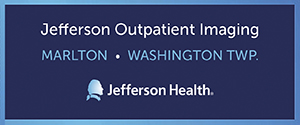
Spotting the signs of a heart attack or stroke quickly can be life-saving. While the public has become much better educated on what to look for, the truth is that both of these conditions don’t always have typical symptoms. The best thing you can do is educate yourself and practice preventive care.
Focus on prevention
It definitely helps to know the factors that can increase your risk. Dr. Vic Bahal, cardiologist and CEO with Advanced Cardiology of South Jersey in Mullica Hill, says obesity, uncontrolled diabetes, uncontrolled hypertension, and unfavorable cholesterol readings can all increase the risk of cardiovascular disease. So does a previous stroke or significant peripheral arterial disease, which is the presence of blockages in the arteries of the legs or neck, which puts one at greater risk. “The most important preventive step is an initial consultation with a cardiologist who can precisely evaluate the baseline of health of the cardiovascular system and implement screening tests as needed to identify heart disease before it strikes,” says Bahal. “Early detection is the key to prevention.”
The risk factors for stroke are quite similar to heart disease, says Dr. Kenneth Wu, medical director at Marlton Rehabilitation Hospital. They are typically broken into “controllable” and “non-controllable” categories. Risk factors that have some control include hypertension, atrial fibrillation, high cholesterol, diabetes, atherosclerosis, smoking, alcohol use and obesity. Uncontrollable risk factors include age (the risk increases with age), gender (women are more prone than men), race (African Americans are at a greater risk), previous stroke, fibromuscular dysplasia, or a “hole in the heart.”
“To have had a stroke or mini stroke definitely puts you at a greater risk of having recurrent strokes,” adds neurologist Dr. Rajat
Kumar at Lourdes Medical Associates (LMA) Neurology Consultants in Cherry Hill. “About 30 percent of people who have had a stroke will have another one within five years, and among 18 percent of patients who have recurrent strokes, it will ultimately be fatal. So it’s incredibly important that patients who have had a stroke—or are at a greater risk—engage in stroke prevention methods.”
“Most people already know the key things they can be doing to prevent heart attack or stroke such as eating healthier and exercising more,” says Dr. Richard L. Weiss, clinical associate professor of medicine, Perelman School of Medicine at the University of Pennsylvania and the director of echocardiography at Penn Presbyterian Medical Center.
“But there are also certain medications available, including those that can help prevent a second stroke. An aspirin a day can also be helpful in certain populations. It’s important to talk to your doctor about these possibilities.”
New research indicates that people with sleep problems appear more likely to get atrial fibrillation, which is the most common type of heart arrhythmia, and also a risk factor for stroke, says Weiss. “If you’re someone who is fatigued a lot—such as falling asleep during a meeting or a movie—or your partner mentions that you snore a lot or even stop breathing in your sleep, then these are important things to discuss with your doctor,” says Weiss. “It may be the sign that you have a more serious condition like obstructive sleep apnea, which appears to be associated with atrial fibrillation. These are all serious issues that you should not ignore.”
And you’re never too young to start thinking about prevention. At Advocare Township Pediatrics in Sewell, the physicians start cholesterol screenings as young as 5 years old. That’s an important number to know in terms of both stroke and heart attack risk, says Advocare Pediatrician Dr. Kristin Hyman. “For kids, we come at this from a preventive standpoint and pick up on those abnormalities early,” she says. “Unfortunately, by the time many adults come in with problems, they’ve already done a lot of damage. So we focus on prevention starting at childhood.”
Hyman says in terms of cardiac care, it’s always important to know the family history, which can put children at a higher risk of having problems. She also urges parents and caregivers to recognize that second-hand smoke can definitely increase children’s risk of having problems later in life.
Spotting the signs
Although heart attacks occur quite dramatically in television and movies—someone clutches their chest or arm and falls over—the symptoms of a heart attack are not always so obvious in real life. They can include unexplained fatigue, abdominal discomfort, or even jaw pain. These “strange” symptoms may leave patients waiting hours before seeking help. “Everyone knows the obvious signs of a heart attack, but about 10 percent of heart attacks are silent,” says Dr. Kathleen M. Heintz, a clinical cardiologist with Cooper University Health Care. “That means they may have no signs or symptoms of a heart attack.”
Many are surprised to learn that historically women have more heart attacks than men and are more likely to die from one. That’s often because they present with “vague warning signs,” says Bahal. “Often, heart attacks present ‘silently’ without any symptoms in women and diabetic patients. But screening with cardiac stress testing is pivotal if we are to reduce the epidemic of heart disease.”
Part of the problem is also that women typically “present later,” adds Heintz. “They typically have heart attacks later in life and tend to get checked out very late when they already have developed other comorbidities,” she says. “As a result, the mortality rate in women is higher.”
In terms of stroke care, “Time is critical with a stroke because there is only a limited window where the stroke is reversible with treatment,” says Kumar. “After a certain amount of time, the effects become permanent. Don’t drive to an emergency room thinking you can get there faster. Call 9-1-1. An ambulance can also take you directly to a certified stroke center where the physicians are experienced in treating strokes—and that’s important.”
And while strokes are rare in childhood, they can occur. Unfortunately, it’s also a population where the signs are sometimes missed or noticed late. “It’s incredibly important to recognize any signs and symptoms involving a stroke,” says Dr. Connie Domingo, pediatric physical medicine and rehabilitation physician with Weisman Children’s Rehabilitation Hospital, with multiple South Jersey locations. “They often look similar to strokes in an adult with weakness on one side or slurred speech. But we did just have a teenager admitted here who had been complaining of migraine-type headaches. While most headaches are benign, it’s always best to be cautious and recognize that severe headaches in young children are not always just headaches.”
Start today
Even the idea of a heart attack or stroke can be terrifying, but there are many ways you can decrease your chance of having either one. Wu says he would tell patients that it’s never too late to make healthy changes that could help save your life. “People often don’t realize that studies show that even if you stop smoking later in life, after one year, your risk of heart attack decreases by roughly 50 percent. In just a few years, you’re back at the baseline of a person who has never smoked. If you stop smoking, start eating healthier, and incorporate some exercise, it can make a world of difference. It’s never too late to make a positive change.”
Matters of the Heart
Trusted names in medicine
Advanced Cardiology of South Jersey
Mullica Hill
(856) 241-3838
AdvancedCardiologySJ.com
Advocare Township Pediatrics
Sewell
856-227-KIDS (5437)
AdvocareTownshipPeds.com
Heart Institute
Eight office locations in South Jersey
(888) 342-2034
CooperHealth.org/Heart
Stroke Care Program, Our Lady of Lourdes Medical Center
Camden
(856) 757-3500
LourdesNet.org
Marlton Rehabilitation Hospital
Marlton
(856) 988-8778
MarltonRehab.com
Nemours Children’s Clinic, Voorhees
The Nemours Children’s Clinic, Voorhees, at 1000 White Horse Road, offers the expertise of nationally renowned specialists that work with your child’s physician to develop a treatment plan that best meets the needs of your child and family. Beginning Feb. 4, appointments for feeding, occupational, physical and speech therapies will be available at their new Voorhees location: 443 Laurel Oak Road. Expanded specialty care services including developmental pediatrics, and onsite imaging will be available at the new location beginning on April 8.
Your child. Their promise.
Voorhees
(856) 309-8508
Nemours.org
Penn Medicine Heart and Vascular
Serving the Greater Philadelphia region and Southern New Jersey
(800) 789-PENN (7366)
PennMedicine.org/Heart
Weisman Children’s Rehabilitation Hospital
Offices throughout South Jersey
(877) 543-8774
WeismanChildrens.com
Published (and copyrighted) in South Jersey Magazine, Volume 9, Issue 11 (February, 2013).
For more info on South Jersey Magazine, click here.
To subscribe to South Jersey Magazine, click here.
To advertise in South Jersey Magazine, click here.












